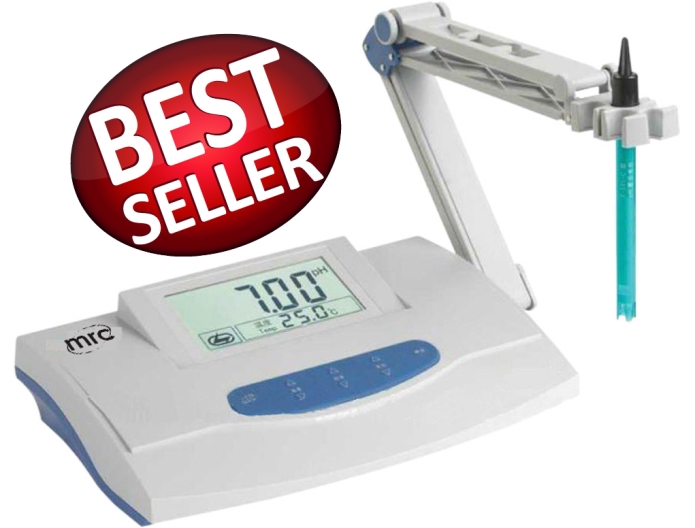Environmental Laboratories require specialized equipment to accurately measure and analyze various environmental parameters. Below, we delve into the essential laboratory equipment necessary for environmental laboratories, ensuring comprehensive and precise environmental analysis.
Analytical Balances: Precision at Its Best
Analytical balances are indispensable in environmental laboratories for their ability to measure small mass changes with high precision. These Laboratory balances are used to weigh samples and reagents with an accuracy of up to 0.0001 grams. The high sensitivity of analytical balances makes them perfect for quantitative chemical analysis, ensuring that even the smallest variations in sample mass are detected and recorded. This precision is critical when measuring pollutants or trace elements in environmental samples.

Spectrophotometers: Analyzing Light Absorption
Spectrophotometers are essential for measuring the amount of light absorbed by a sample. They are widely used in environmental laboratories to analyze water and soil samples for contaminants. By measuring the intensity of light at different wavelengths, spectrophotometers help in identifying and quantifying various substances present in a sample. This is particularly important for detecting pollutants such as nitrates, phosphates, and heavy metals in water bodies.

Gas Chromatographs: Separating Complex Mixtures
Gas chromatography (GC) is a powerful analytical technique used to separate and analyze compounds that can be vaporized without decomposition. Gas chromatographs are crucial in environmental laboratories for analyzing complex mixtures of organic compounds, such as those found in soil, air, and water samples. GC helps in identifying volatile organic compounds (VOCs) and semi-volatile organic compounds (SVOCs), providing detailed information about the composition and concentration of these substances in the environment.
Mass Spectrometers: Identifying Molecular Composition
Mass spectrometry (MS) is used in conjunction with gas chromatography (GC-MS) or liquid chromatography (LC-MS) to identify and quantify the molecular composition of samples. Mass spectrometers provide high sensitivity and specificity, making them ideal for detecting low levels of environmental pollutants. MS is essential for analyzing complex samples and identifying unknown compounds, ensuring accurate environmental monitoring and assessment.
High-Performance Liquid Chromatographs (HPLC): Separating Non-Volatile Compounds
High-performance liquid chromatography (HPLC) is used to separate, identify, and quantify non-volatile compounds in a sample. HPLC systems are essential in environmental laboratories for analyzing pesticides, herbicides, and other organic pollutants in water and soil samples. The high resolution and sensitivity of HPLC make it a valuable tool for detecting contaminants at trace levels, ensuring compliance with environmental regulations and standards.
Atomic Absorption Spectrometers: Measuring Metal Concentrations
Atomic absorption spectrometry (AAS) is a technique used to measure the concentration of metals in environmental samples. Atomic absorption spectrometers are crucial for detecting and quantifying heavy metals such as lead, mercury, arsenic, and cadmium in water, soil, and air samples. AAS provides high sensitivity and accuracy, making it essential for monitoring metal contamination and assessing environmental health risks.
pH Meters: Monitoring Acidity and Alkalinity
pH meters are used to measure the acidity or alkalinity of environmental samples. Accurate pH measurement is essential for assessing water quality, soil health, and the overall condition of the environment. pH meters help in determining the suitability of water for drinking, agricultural, and industrial purposes, as well as identifying potential environmental hazards.

Conductivity Meters: Assessing Ionic Content
Conductivity meters measure the ability of a sample to conduct electrical current, which is directly related to the concentration of ions in the sample. Conductivity measurements are important for assessing water quality and monitoring pollution levels in water bodies. High conductivity indicates high levels of dissolved salts and pollutants, while low conductivity suggests purer water. Conductivity meters are essential for environmental monitoring and water quality assessment.
Turbidity Meters: Measuring Water Clarity
Turbidity meters are used to measure the clarity or cloudiness of water, which is an important indicator of water quality. Turbidity is caused by suspended particles such as silt, clay, organic matter, and microorganisms. High turbidity levels can reduce light penetration in water, affecting aquatic life and indicating pollution. Turbidity measurements are essential for monitoring water bodies and ensuring safe drinking water.
Flow Cytometers: Analyzing Microbial Populations
Flow cytometry is a technique used to analyze the physical and chemical characteristics of cells or particles in a fluid. Flow cytometers are used in environmental laboratories to study microbial populations in water and soil samples. This technique helps in identifying and quantifying microorganisms, assessing biodiversity, and monitoring microbial contamination. Flow cytometry is essential for environmental microbiology and ecosystem health assessment.
Total Organic Carbon (TOC) Analyzers: Measuring Organic Matter
Total Organic Carbon (TOC) analyzers are used to measure the amount of organic carbon in environmental samples. TOC is an important parameter for assessing water and soil quality, as it indicates the presence of organic pollutants and the overall health of the ecosystem. TOC analysis helps in monitoring pollution levels, assessing the effectiveness of water treatment processes, and ensuring compliance with environmental standards.
Microscopes
Purpose: Magnify samples for detailed examination.
Features: Compound and stereo options, digital imaging capabilities.
Centrifuges
Purpose: Separate substances of different densities.
Features: Variable speed and temperature control.
Purpose: Provide controlled environmental conditions for sample growth.
Features: Temperature and humidity control, shaking capabilities.
Sampling Equipment
Purpose: Collect environmental samples such as soil, water, and air.
Features: Corers, bottles, pumps, and filters.